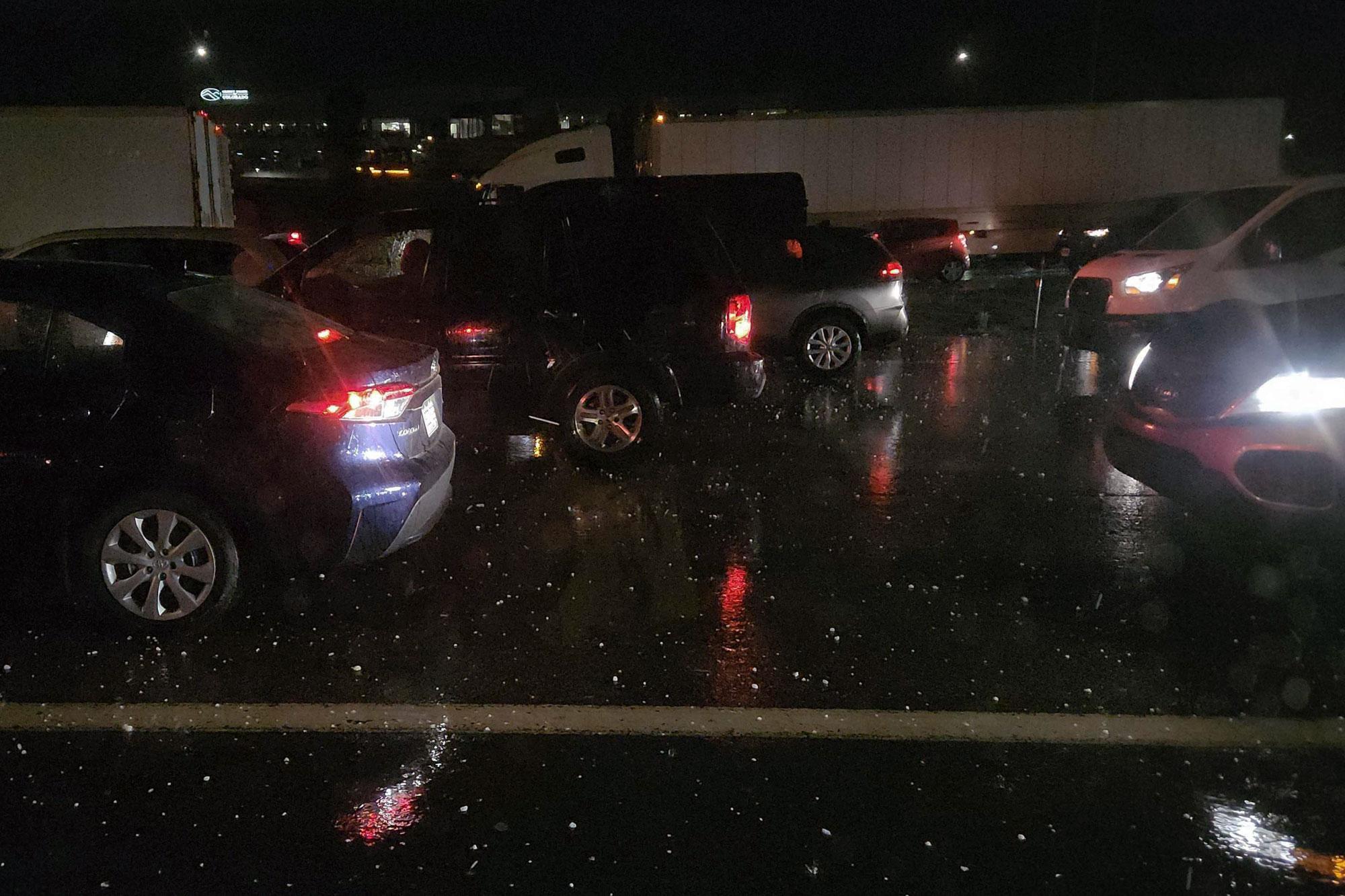
A May 2024 hailstorm in the Denver metro area caused nearly $2 billion in damages across Colorado, according to a federal climate report.
The storm unleashed hail starting late on May 30, and battered cars, homes and businesses. Videos posted on social media showed scattered baseball-sized hail covering a parking lot. No deaths were recorded, according to the National Oceanic and Atmospheric Administration (NOAA), which authored the report.
The day after the storm, State Farm Insurance told CPR News that nearly 2,800 claims for hail damage had already been submitted to the insurer.
The storm is the second costliest hailstorm in Colorado history, according to NOAA data. In 2017, hail storms and wind tore through Denver, leaving insurers to pick up nearly $2.8 billion in damages when adjusted for inflation. In total, that storm resulted in $4.3 billion in inflation-adjusted losses.
The May storm is the only disaster to cause over a billion dollars in losses in Colorado this year. The costliest disaster to ever hit Colorado was part of a multistate drought and heatwave in 2012. That resulted in more than $41.7 billion in damages across 22 states, according to NOAA.
Some Coloradans caught in the May storm faced months of headache afterwards. The storm dented the entire exterior of Boulder resident Kaitlin Hansen’s car, and cracked its windshield. She said her husband watched helplessly as the car was pelted from above.
“You couldn’t really go outside because it was too dangerous, and if you got in the car and started driving it was also dangerous,” Hansen said.
Her insurer estimated it would cost at least $6,000 and a few months to fix.
Federal officials, in the meantime, are keeping an eye on the increasing frequency of such intense storms.
The federal government has been tracking “billion-dollar disasters” since 1980 to inform officials and the public about how extremes are changing. Data shows that extreme disasters are increasing in frequency, and the dollar amount of devastation is increasing in part because of where people live and how much of their property is at risk, according to NOAA climatologist Adam Smith.
“2023 and 2024 are head and shoulders above all other years for the frequency of these billion-dollar disaster events,” Smith said.
Billion-dollar disasters have caused over $1.1 trillion in losses since 2017, according to Smith. This year alone, there have been 19 such disasters, which have killed at least 149 people and caused nearly $50 billion in damages. Besides Colorado’s hailstorm, they include tornado outbreaks, wildfires, droughts and other severe weather events throughout the United States.
Severe storms are by far the most common billion-dollar disasters to affect Colorado — and have cost residents in the state up to $50 billion in losses since 1980, according to NOAA data.
“Climate change is also supercharging a number of these different extremes that lead to billion-dollar disasters,” Smith said.
NOAA data shows that, on average, there are now 18 days between billion-dollar disasters, compared to 82 days in the 1980s. That frequency can make it hard to marshall enough resources to respond to every disaster.
“There is an increased need to focus on where we build, how we build, and investing in infrastructure updates that are designed for a 21st-century climate,” Smith said.









